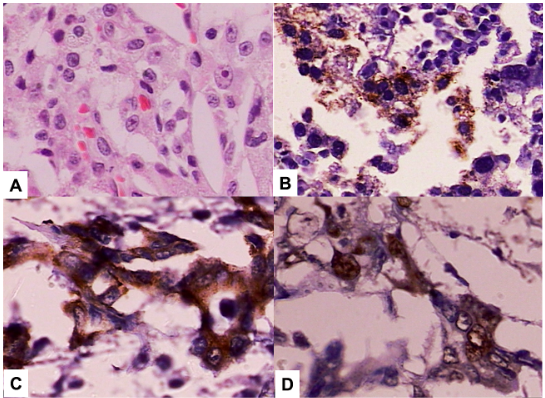Metastatic epithelioid mesothelioma in a dog
DOI:
https://doi.org/10.21708/avb.2023.17.4.11822Resumen
Mesothelioma is a neoplasm considered infrequent in canines. Its peritoneal location is not common in dogs when compared to the pleural origin. This study aims to report a case of metastatic trabecular epithelioid mesothelioma in a dog, diagnosed through anatomopathological and immunohistochemical examination. The patient was hospitalized and treated, but his clinical picture worsened, and euthanasia was chosen. At necropsy, the main findings were the abdomen and thorax with the presence of tumor nodules of soft consistency, and the cuts were pinkish-brown in color. Histologically, they were composed of malignant mesothelial cells, predominantly epithelioid cells arranged in cords. There was metastasis in the lungs, kidneys, and lymphatic vessels of the heart. Samples were submitted to immunohistochemical analysis and tumor cells showed cytoplasmic immunoreaction for anti-human mesothelial cell (HBME-1) and anti-cytokeratin (AE1/AE3), in addition to a moderate proliferative index evidenced by the reaction against the proliferation nuclear antigen cellular (PCNA). There was no staining for vimentin and anti-epithelial antigen (EMA). Thus, the anatomopathological and immunohistochemical analysis showed that it was a trabecular epithelioid mesothelioma with a moderate proliferative index and multiple metastatic sites.
Descargas

Descargas
Publicado
Número
Sección
Licencia
Derechos de autor 2023 Acta Veterinaria Brasilica

Esta obra está bajo una licencia internacional Creative Commons Atribución 4.0.
Autores que publicam na Acta Veterinaria Brasilica concordam com os seguintes termos: a) Autores mantém os direitos autorais e concedem à revista o direito de primeira publicação, com o trabalho simultaneamente licenciado sob a Licença Creative Commons Attribution que permite o compartilhamento do trabalho com reconhecimento da autoria e publicação inicial nesta revista. b) Autores têm autorização para assumir contratos adicionais separadamente, para distribuição não-exclusiva da versão do trabalho publicada nesta revista (ex.: publicar em repositório institucional ou como capítulo de livro), com reconhecimento de autoria e publicação inicial nesta revista. c) Autores têm permissão e são estimulados a publicar e distribuir seu trabalho online (ex.: em repositórios institucionais ou na sua página pessoal) a qualquer ponto antes ou durante o processo editorial, já que isso pode gerar alterações produtivas, bem como aumentar o impacto e a citação do trabalho publicado (Veja O Efeito do Acesso Livre).


 Esta obra está licenciada com uma Licença
Esta obra está licenciada com uma Licença 